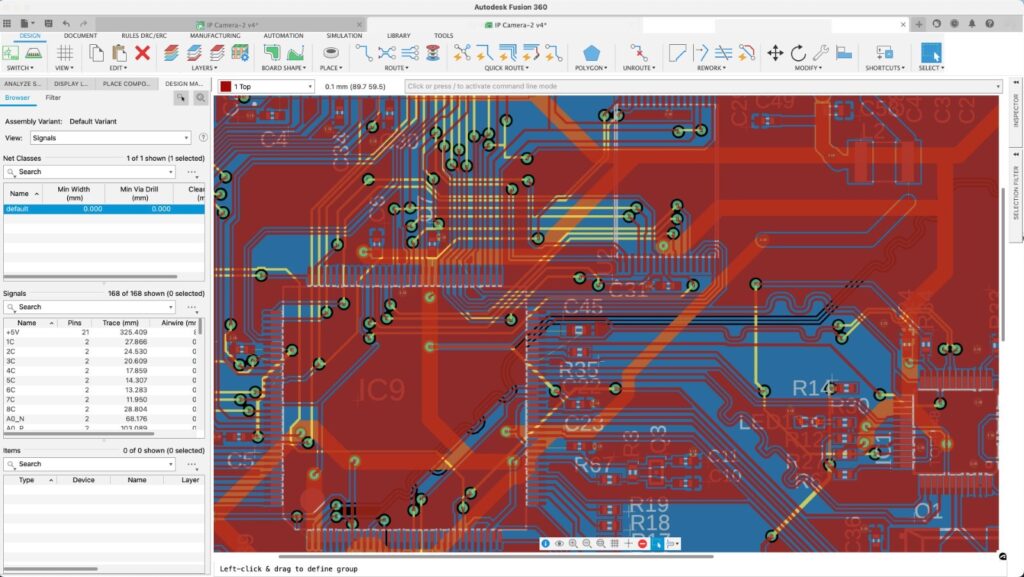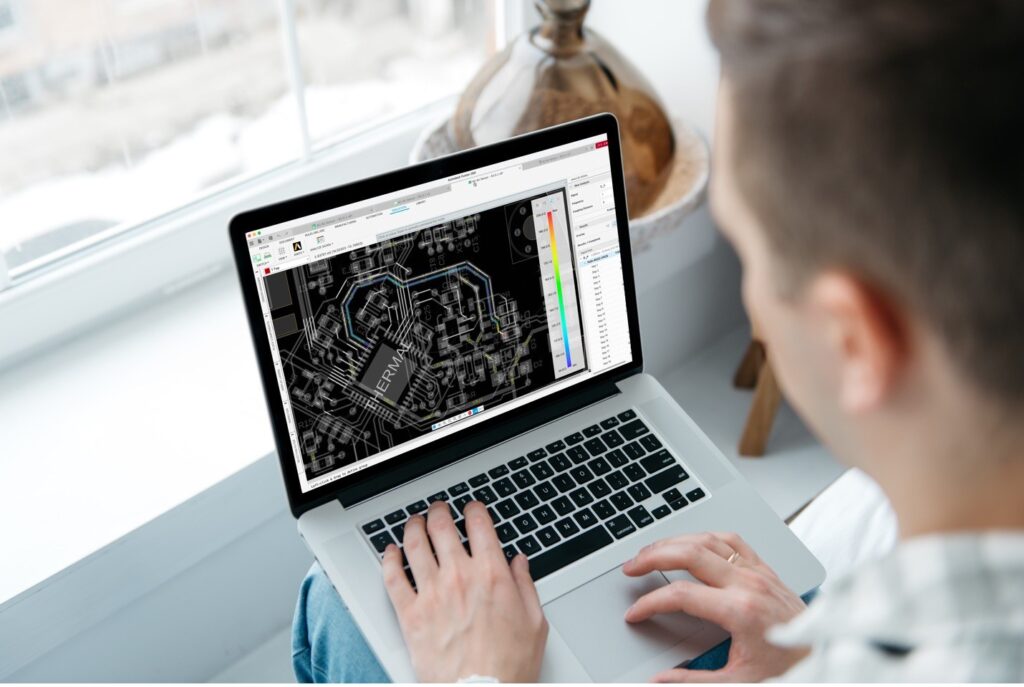& Construction

Integrated BIM tools, including Revit, AutoCAD, and Civil 3D
& Manufacturing

Professional CAD/CAM tools built on Inventor and AutoCAD
7 min read
Let’s look at the basics of PCB design for wireless technologies, best practices, and challenges when creating wireless products.

In recent years, the demand for wireless communication technologies like Bluetooth and Wi-Fi has grown exponentially. These technologies have become essential to our lives, enabling us to connect and transfer data seamlessly between various devices. As a result, designing and manufacturing cutting-edge wireless products require a strong understanding of printed circuit board (PCB) layout design.
As an experienced design engineer, I have encountered numerous challenges and opportunities while working on PCB layout design for wireless technologies. In this article, I will share my insights and expertise on mastering PCB layout design for Bluetooth and Wi-Fi-enabled products. We will explore the basics of these wireless technologies. As well as the importance of PCB layout design in such products, key considerations, best practices, and everyday challenges.

Before delving into the specifics, it’s essential to understand the fundamental principles of Bluetooth and Wi-Fi technologies. Bluetooth technology is a short-range wireless communication protocol primarily for transferring data between devices. It operates in the 2.4 GHz industrial, scientific, and medical (ISM) frequency band. It uses frequency-hopping spread spectrum (FHSS) and adaptive frequency hopping (AFH) techniques to maintain robust connections and avoid interference.
Wi-Fi is a wireless networking technology that connects devices to the Internet and local area networks (LANs). Wi-Fi operates in the 2.4 GHz and 5 GHz frequency bands. It uses orthogonal frequency-division multiplexing (OFDM) and multiple-input, multiple-output (MIMO) techniques for high-speed data transmission. Bluetooth and Wi-Fi technologies have unique characteristics, requirements, and challenges to address during the PCB layout design process.

The quality of a PCB layout can significantly impact the performance, reliability, and overall success of a wireless product. A well-designed PCB layout ensures optimal signal integrity, minimal interference, and efficient power management. All of which are crucial for maintaining stable, high-performing wireless connections.
In Bluetooth and Wi-Fi-enabled products, the PCB layout design plays an even more critical role. This is due to high-frequency signals, sensitive RF components, and complex antenna systems. A poorly designed PCB layout can lead to signal degradation, increased noise levels, and reduced wireless connectivity range. Therefore, following best practices and design guidelines for wireless applications is essential for a successful PCB layout design.
Designing PCB layouts for wireless applications involves several critical factors that must be considered to ensure optimal performance and reliability. Some of the key considerations include:
When designing a Bluetooth circuit board, following certain best practices to ensure optimal performance and reliability is essential. Some of these best practices include:
Wi-Fi circuit design involves various types of Wi-Fi chips and onboard considerations for a successful PCB layout. Some common Wi-Fi types include single-band, dual-band, and tri-band Wi-Fi. These operate at different frequency bands and offer varying levels of performance and range.
When selecting Wi-Fi chips for your design, it’s essential to consider factors such as power consumption, data rate, and integration with other components on the board. Some popular Wi-Fi chipsets include Broadcom, Qualcomm, and Texas Instruments. All of which offer a wide range of features and capabilities to suit different application requirements.
For onboard Wi-Fi considerations, it’s crucial to follow best practices for RF component placement, trace routing, and antenna design to ensure optimal performance and signal integrity. Additionally, proper power management and thermal considerations must be addressed to maintain stable Wi-Fi connections and prolong the product’s life.
Antenna selection and placement are critical in determining the range, signal strength, and overall performance of Wi-Fi and Bluetooth-enabled products. Various types of antennas are available for wireless applications, such as chip antennas, PCB trace antennas, and external antennas. The choice of the antenna depends on factors such as desired range, form factor, and cost.
Proper antenna placement is crucial for minimizing interference and maximizing signal strength. Keeping the antenna away from other components, metallic objects, and high-speed digital signals is essential. This helps prevent signal degradation and reduced range. Proper impedance matching and ground plane design must also be considered for optimal antenna performance.

Once the PCB layout design for a wireless application is complete, testing and validating the design is essential to ensure optimal performance and reliability. Some of the standard tests and validation techniques include:
Designing PCB layouts for Bluetooth and Wi-Fi-enabled products can be challenging. This is due to the complex nature of wireless technologies and the need for precise RF component placement, routing, and grounding. Some of the common challenges and their solutions include:
In conclusion, mastering PCB layout design for cutting-edge Bluetooth and Wi-Fi-enabled products is essential for ensuring optimal performance, reliability, and success in today’s competitive wireless market. By the basics of wireless technologies, following best practices, and addressing key design considerations, engineers can create high-quality PCB layouts that meet the requirements of modern wireless applications.
The demand for more sophisticated and integrated PCB layouts will only increase as wireless technologies evolve. Future trends in wireless PCB layout design will focus on further miniaturization, integrating multiple wireless technologies, and adopting advanced materials and manufacturing techniques. By staying up-to-date with these trends and continuously refining their skills, design engineers can continue creating successful, cutting-edge wireless products.
Ready to get started with PCB design for your next wireless product? Download a free 30-day trial of Autodesk Fusion 360.
By clicking subscribe, I agree to receive the Fusion newsletter and acknowledge the Autodesk Privacy Statement.
Success!
May we collect and use your data?
Learn more about the Third Party Services we use and our Privacy Statement.May we collect and use your data to tailor your experience?
Explore the benefits of a customized experience by managing your privacy settings for this site or visit our Privacy Statement to learn more about your options.